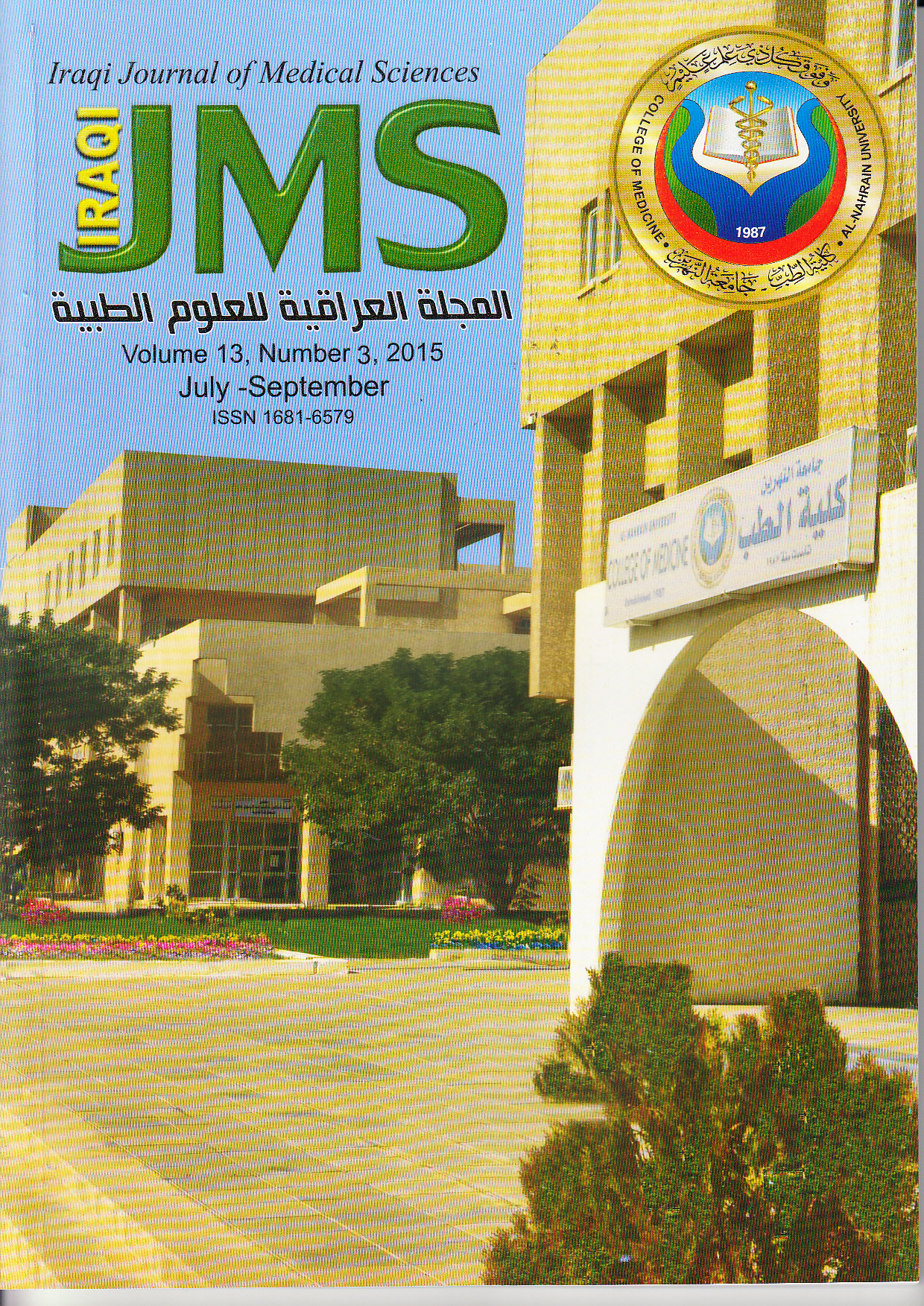|
Vol. 13 Issue 3 July - September / 2015
Published on website | Date : 2016-03-22 12:16:57
IMMUNOHISTOCHEMICAL MDA CHANGES OF THE NEWBORN RAT FRONTAL CORTEX AFFECTED BY PRENATAL KETAMINE EXPOSURENameer F. Gaeb, Hayder J. Mobarak, Hayder A. JaffarAbstractBackground: Ketamine has an excellent analgesic property and is widely used currently to provide “sedation” for minor procedures. Ketamine has been proved to potentiate deletion of large numbers of neurons from the developing brain.
Objectives:To investigate the neurotoxic effect of prenatal ketamine exposure on newborn rat frontal cortex using malondialdehyde antibodies as immunohistochemical marker. Methods: Seventy two pregnant rats were divided into three groups I, II and III (24 rat for each group) and exposed to ketamine at different gestational periods (7th day, 11th day, and 18th day, respectively). Each group was subdivided into four subgroups including the control subgroup A injected intraperitoneally with normal saline, and the experimental subgroups B, C and D rats injected intraperitoneally with different doses of ketamine (5mg/kg, 10mg/kg, and 20mg/kg respectively). Paraffin sections of the frontal cortex of the newborn rats were immunohistochemically stained with Expose Mouse and Rabbit Specific HRP/DAB Detection Kit. The Aprio Image Scope v.9 software was used to evaluate the anti-MDA antibodies immunohistochemical reaction. Results:Non-significant variability between the subgroups B and C of group I, while significant variability was found between these two subgroups in groups II and III. The values obtained from subgroup B in all the groups I, II, and III had no significant variability compared to the control subgroup (A). The values obtained from subgroups (C) and (D) showed statistically significant changes compared to the control subgroup (A) in all the groups (I, II, and III). The results showed significant variability by comparing the results of subgroup (D) with both subgroup (B) and subgroup (C) in all the groups. Conclusion:The anti-MDA immunohistochemical reactivity shown in this study suggested that lipid peroxidation is an event occurring during ketamine induced neurotoxicity, this event leads to apoptosis. Keywords:Cortex, prenatal, ketamine, neurotoxicity, immnuohistochemistry. Full-text |
Some tools below are only available to our subscribers or users with an online account |
 |
Please wait until the current process completes ... |




